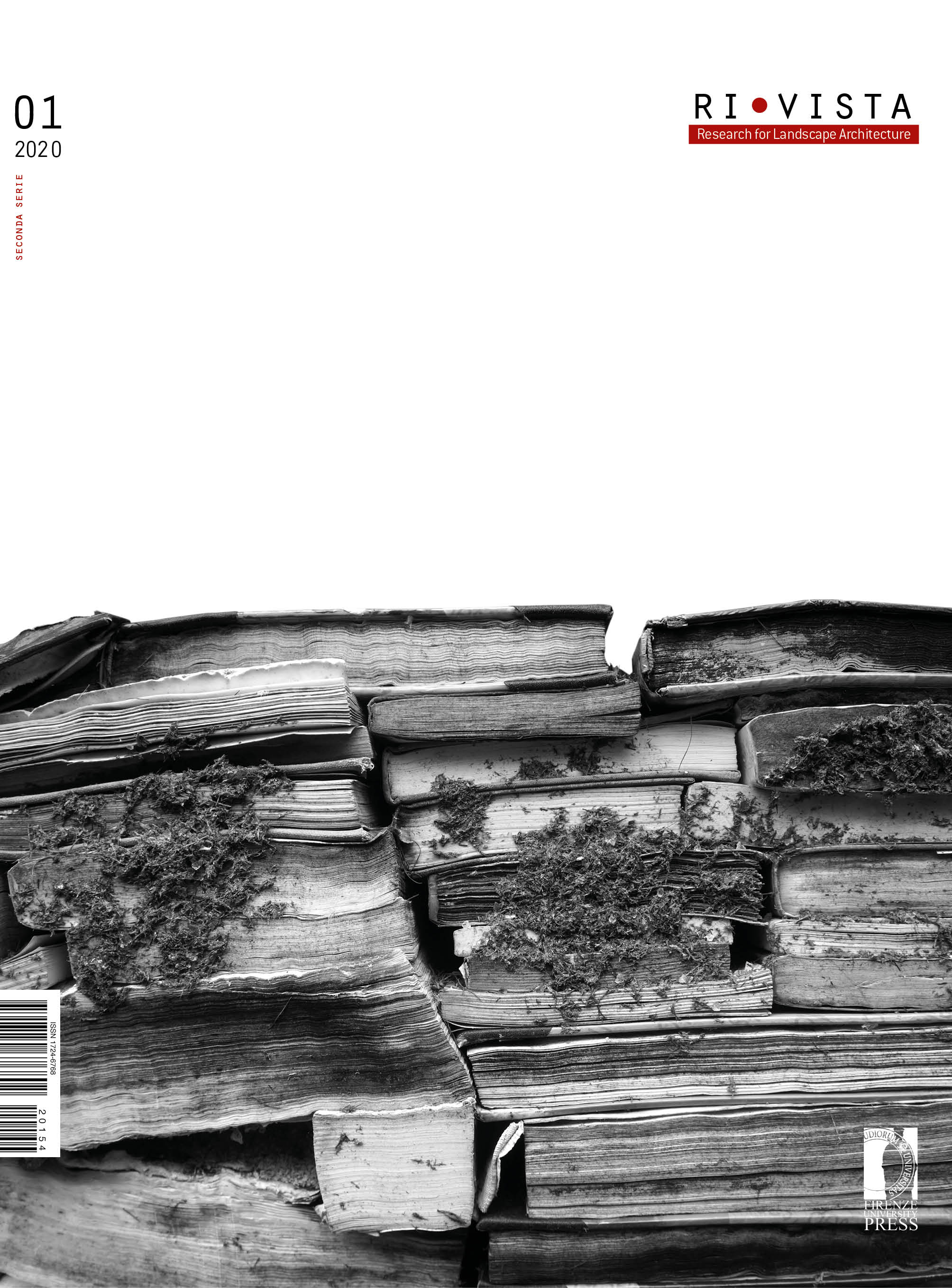Abstract
Landscape design has always been considered a cultural crossroad, an open reference, a welcoming and available space of interpretation, but this does not equate to considering it a field of undetermined meanings nor a set of images difficult to recognize. Complexity, intended as aptitude to distinguish but not to separate
, can be considered a genetic feature of the landscape design project since its modern ‘origins’, but often it is misunderstood for indeterminacy. Univocal terms, those terms apparently clear, frequently used to ‘confine’ the landscape design project (green areas, urban, suburban, natural, anthropic landscapes, etc., borgesian lists which will never get to clear doubts about ‘attributions’) reveal the crisis of ideas long worn by time and simplifications, only able to flatten every possibility of interpretation and start the usual nominalist debate, aimed mostly at (very complicated) disciplinary attributions. The hypothesis discussed in this article is that the landscape design project is instead clearly interpretable. The field of meanings to which the article will refer to
is ascribable to the representation and design experimentation of relations with the natural
world. These relations are obviously very different one from the other, historically defined, but related by the same research of spatial interaction between human communities, contexts of life and ‘other’ living species. Landscape designers have a common vision capable of looking at living species as traveling companions on the path to the project and not as mere ‘tools’, whether the individual experience of landscape designers is related to the design of gardens and parks, or comes from the study of layered landscapes which must not be
wasted, or is oriented towards landscapes damaged by use and pollution, or is on projects of poetic comment or radical regeneration of degraded soils, whether it is referred to ecological adaptability or collective health, to social dialogue or the re-appropriation of abandonedspaces. Until a few years ago this central role was difficult to affirm, and landscape designerswere consideredmarginalfigures, exponents of a soft world, detached from real dynamics. The landscape design project instead, far from being accessory and decorative, is a hard project, and necessary, today more than ever. In the words of Kristine Hill: “People often think of landscape as something ephemeral or something at small scale, but landscape is massive and muscular and strong” (Hill 2012, p. 49). To argue more clearly about the peculiarities of the contemporary landscape design project, it may be useful to briefly outline some distinguishing features in other moments of history.






